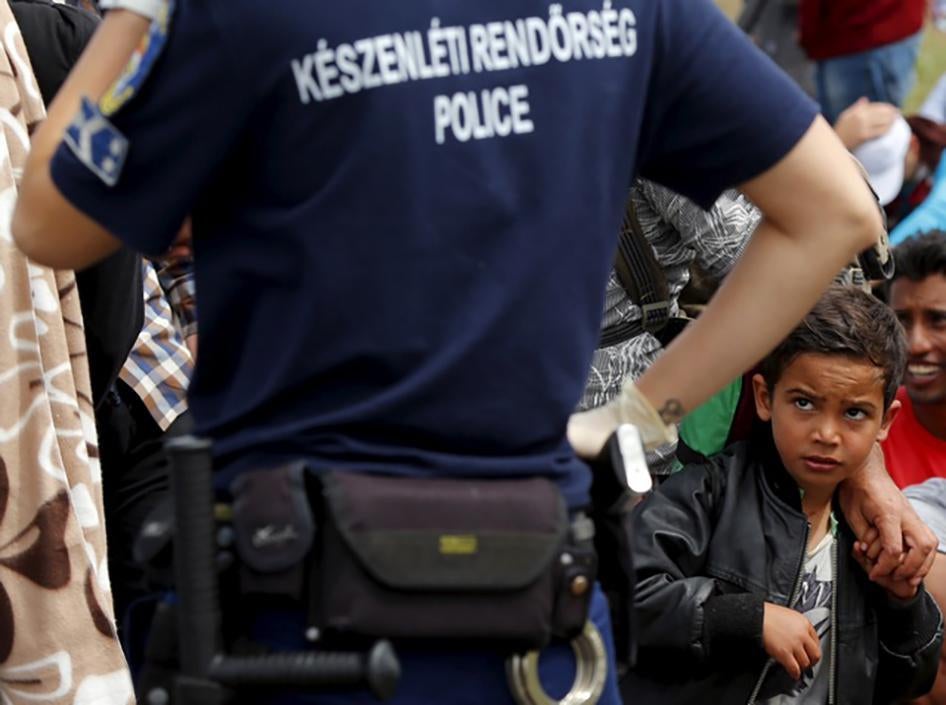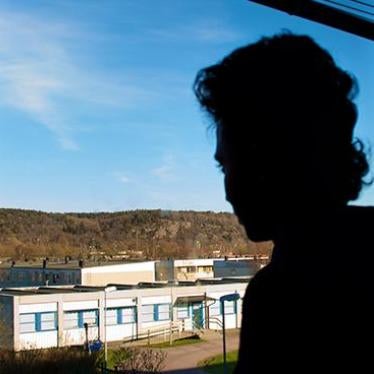Seventy-one decomposing bodies discovered in a truck on the side of an Austrian highway. Two hundred presumed drowned when their boat sunk off the Libyan coast. Fifty-two people found suffocated in the hold of another boat. This relentless catalogue of death, within the space of 24 hours, is a particularly grim reminder of the crisis at and within EU borders.
That people are dying to reach the EU is, depressingly, not news. This year alone, over 2,300 people have died in the Mediterranean, according to the International Organisation for Migration. Deaths at sea capture much of the attention, but countless (literally: we don’t know exactly how many) have died of suffocation, dehydration, and exposure to the elements at EU land borders. One count puts the overall death toll at EU borders at more than 30,000 since 2000.
That people are dying to travel within the EU—the truck was found near the border between Austria and Hungary, two EU countries—has shocked many. It may be that these people were victims of human trafficking, coerced into the truck to be transported somewhere for the purposes of exploitation. But it may well be that they knowingly paid smugglers to take them from Hungary, where reports suggest that leg of the journey began, to another EU country. Either way, those responsible for this heinous crime—four suspects have already been arrested—should be held to account.
But why would anyone put themselves in this kind of danger? According to the UN refugee agency UNHCR, two-thirds of the over 300,000 people who have made the journey to the EU so far this year are from countries like Syria, Afghanistan, Eritrea, Somalia, and Iraq—countries experiencing war or generalized violence, or under repressive regimes.
Once in Greece or Italy, the two main entry points, many wish to continue onward to other EU countries. This is against EU rules, which impose the obligation on the first country of entry to process asylum claims. But it is often a rational choice for the asylum seekers themselves to head for countries where they believe prospects are better for receiving some kind of protection and proper integration measures.
Despite harmonized asylum standards and procedures, EU members have strikingly varying asylum approval rates (10 percent in Hungary versus 42 percent in Germany, for example). They also may want to join family members, or go where there is an established community from their country of origin, or where they believe they have a better shot at getting a job and giving their children a good education.
Based on the information they have, many asylum seekers seek to reach Germany or Sweden, for example. It shouldn’t surprise anyone that many of those who arrive in Greece, a debt-ridden country with a dysfunctional asylum system in no position to cope with the significant arrivals on its shores, plan to move onward. So far this year, almost 200,000 have reached Greece, creating a humanitarian crisis. Many continue their journey overland, along the Western Balkan route through Macedonia and Serbia, to reach Hungary and beyond.
Between the northern EU countries that figure as preferred destinations, and the southern and eastern countries where migrants and asylum seekers first arrive, lies a large swath of countries doing very little to share responsibility for asylum seekers and refugees. When the European Commission, the EU’s executive body, proposed a mandatory scheme to relocate a modest 40,000 asylum seekers from Italy and Greece over a two-year period, the majority of EU countries insisted the program be voluntary. They then proceeded to pledge insufficient places, falling far short of the target.
The EU should take immediate and long-term steps to address the crisis at and within EU borders. It should sustain robust search and rescue in the Mediterranean. It should help minimize the need to embark on these dangerous journeys in the first place by expanding safe and legal channels. This can include significantly increasing the numbers of refugee resettlement places in response to UNHCR appeals, as well as broader use of humanitarian visas and family reunification to help those in need of international protection travel lawfully to the EU. Europe should also consider broader work-based visa issuance based on filling its labor needs.
To address inequitable distribution of responsibility among EU countries, bold steps are needed. In the immediate term, EU countries should significantly increase their pledges to relocate asylum seekers, particularly from Greece. The umbrella group European Council on Refugees and Exiles (ECRE) has called for EU countries to relocate 70,000 asylum seekers from Greece within a year, double the insufficient numbers agreed by governments for both Greece and Italy in July. If people there had a reasonable expectation for orderly relocation within a reasonable amount of time, they might choose that over putting themselves in the hands of smugglers for the arduous and evidently dangerous overland journey. Short of a fundamental revision of the Dublin system, EU countries should make much more use of favorable clauses in the regulation. Germany recently announced it will take responsibility for all Syrian asylum seekers on its territory, even if they could be transferred to a first country of entry under Dublin. Other countries should follow suit, including for other nationalities.
Ultimately, all EU countries should have fair and efficient asylum procedures, and fully respect the rights of migrants who do not have international protection needs, in keeping with EU standards and law. When that is the case, maybe people won’t risk their lives to cross an EU border.





